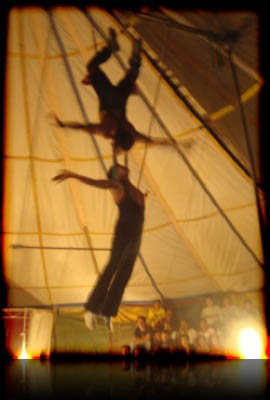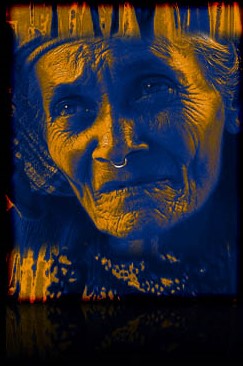Disintegrating Involvement in Second Life
DOI:
https://doi.org/10.25071/1913-5874/37338Abstract
The following paper is a theoretical perspective on identity and embodiment disintegration in designed virtual sex involvements. The study data, derived from avatar sex participant interviews and virtual world field observations demonstrates the variance of enacted cognitive processes in the progressions of anticipatory desire and realized interactions. It is suggested that we design our selves and our worlds in anticipation of involvements and, reciprocally, in the acts of involving with these designed worlds and selves we, in turn, are progressively defined and modified. To designate worlds of potential involvement is to engage in a relentless struggle with incongruity. The empirical disintegration of self and world is an ongoing fact, emergent with ongoing re-designation and re-integration of self and world. This essay highlights the role of emphatic congruence assessments in the disintegrating involvements of avatar sex and intimacy.
References
Anderson, M. L. Embodied cognition: A field guide. Artificial Intelligence (2003) 149, no. 1: 91-130.
Boellstorff, T. Coming of age in Second Life: An anthropologist explores the virtually human. Princeton: Princeton University Press, 2008.
Bratman, M. E.. Reflection, planning, and temporally extended agency. The Philosophical Review 109, no. 1, (2000): 35-61.
Brookey, R. A., and K. Cannon. Sex Lives in Second Life. Critical Studies in Media Communication 26, no. 2, (2009): 145-164.
Bruun, H., and R. Langlais.. On the embodied nature of action. Acta Sociologica 46, no. 1,(2003): 31-49.
Clark, A. Perception, action, and experience: Unraveling the golden braid. Neuropsychologia 47, no. 6, (2009): 1460-1468.
Dennett, D. C. Kinds of minds. New York: Basic Books,1996.
Donald, M. Origins of the modern mind: Three stages in the evolution of culture and cognition. Cambridge: Harvard University Press,1991.
Foucault, M. Discipline and punish. A. Sheridan, trans. New York: Vintage,1975.
Foucault, M. The history of sexuality, Vol. 1. R. Hurley, trans. New York: Vintage, 1978.
Gagnon, J. H., and Simon, W. Sexual conduct: The social sources of human sexuality. Aldine, 2005.
Gallese, V. Before and below 'theory of mind': embodied simulation and the neural correlates of social cognition. Philosophical Transactions B 362, no. 1480, (2007): 659-669.
Gallese, V., and G. Lakoff. The brain's concepts: The role of the sensory-motor system in conceptual knowledge. The Multiple Functions of Sensory-Motor Representations 22, no. 3/4, (2005): 455-479.
Glaser, B. G. Theoretical sensitivity. Mill Valley: Sociology Press,1978.
Glaser, B. G., and Strauss, A. L. The discovery of grounded theory. Chicago: Aldine,1968.
Hutchins, E. L., J. D. Hollan, and D. A. Norman. Direct manipulation interfaces. Human-Computer Interaction 1, no. 4: (1985): 311-338.
Jensen, S. S. “Actors and Their Use of Avatars as Personal Mediators.” Mediekultur: journal of media and communication research (2009): Vol. 47.
Jensen, S. S. “Reflective Designing for Actors and Avatars in Virtual Worlds.” Designing for Networked Communications — Strategies and Developments, Eds. Heilesen, S. and Jensen, S. S., 187-216. Hershey, London, Melbourne, Singapore: Idea Group Publishing, 2007.
Lakoff, G., and Johnson, M. Philosophy in the Flesh. New York: Basic Books, 1999.
Metzinger, T. Being no one: The self-model theory of subjectivity. Cambridge: The MIT Press, 2004.
Shneiderman, B. Designing the user interface: strategies for effective human-computer interaction. Boston: Addison-Wesley Longman Publishing,1997.
Shneiderman, B. “The future of interactive systems and the emergence of direct manipulation.” In Human factors and interactive computer systems. Ed. Yannis Vassiliou. New Jersey: Ablex Publishing Company,1982.
Simon, W., and J. H. Gagnon. Sexual scripts: Permanence and change. Archives of Sexual Behavior 15, no. 2, (1986): 97-120.
Simon, W., and J. H. Gagnon.. The anomie of affluence: A post-Mertonian conception. The American Journal of Sociology 82, no. 2, (1976): 356-378.
Tomasello, M., and Whiten, A. 1999. The cultural origins of human cognition. Cambridge: Harvard University Press.
Varela, F. J., Thompson, E., and Rosch, E. The embodied mind: Cognitive science and human experience. Cambridge: The MIT Press,1992.
Waskul, D., M. Douglass, and C. Edgley. Cybersex: Outercourse and the Enselfment of the Body. Symbolic Interaction 23, no. 4, 2000.: 375-397.
Waskul, D., and J. Martin. (Now the Orgy is Over. Symbolic Interaction 33, no. 2, (2010 forthcoming).
Waskul, D. D., and P. Vannini. “Ludic and Ludic(rous) Relationships: Sex, Play, and the Internet.” Remote Relationships in a Small World. Ed. Sam Holland, 241-261. New York: Peter Lang, 2007.





